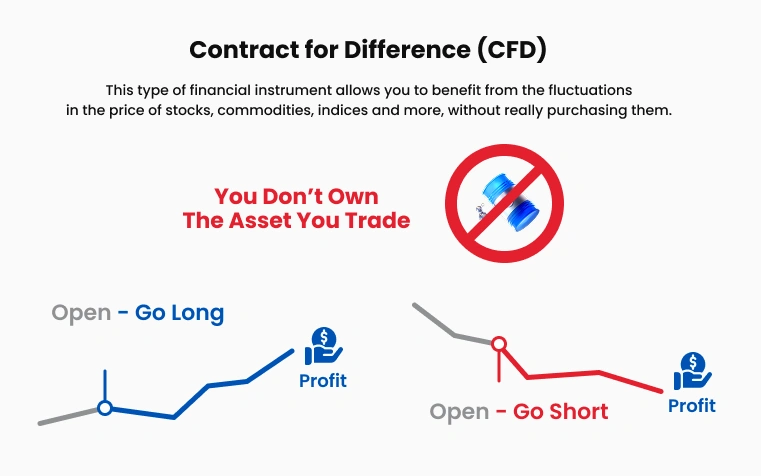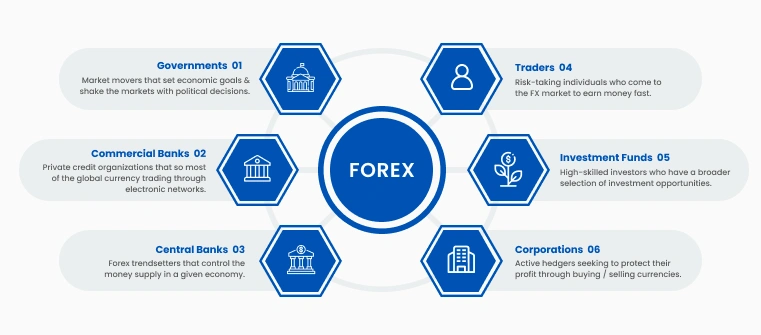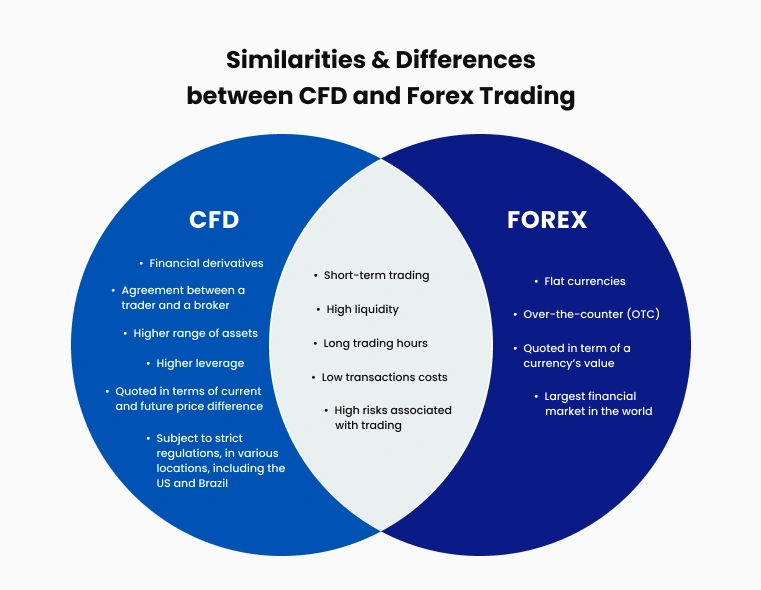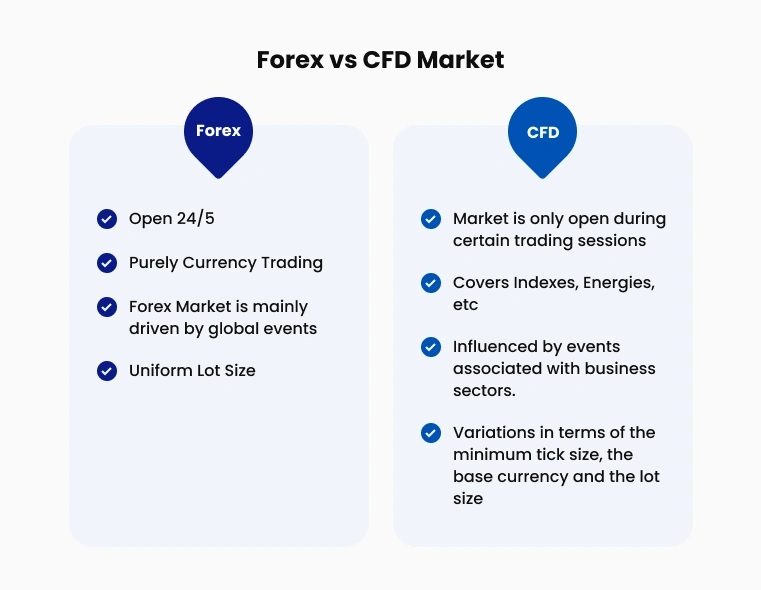

CFD vs Forex Trading: Differences and Opportunities|TMGM

What Are CFDs?
CFDs, or Contracts for Difference, allow traders to speculate on the price movements of various financial instruments without owning the underlying asset.
Diverse instruments: Trade on indices, commodities, stocks, cryptocurrencies, etc.
Flexibility: Long or short positions can be taken, enabling profit potential in rising and falling markets.
Leverage: CFDs often involve margin trading, amplifying potential gains and losses.
No ownership: Traders never own the asset; only the contract represents its price change.

What Is Forex Trading?
Forex trading involves buying and selling currency pairs, aiming to profit from fluctuations in exchange rates.
Largest financial market: The forex market operates 24/5 and boasts a daily trading volume exceeding $7 trillion.
Currency pairs: Trades occur between major, minor, or exotic currency pairs, such as EUR/USD or USD/JPY.
Liquidity: High liquidity in forex ensures fast execution and tight spreads, especially for major pairs.
Focus: Unlike CFDs, forex exclusively deals with currencies.

Similarities Between CFD and Forex Trading
Although they cater to different markets, CFD and Forex trading share several characteristics:
Leverage: Both markets allow margin trading, enabling traders to control larger positions with smaller capital.
Short and long positions: Traders can profit from rising and falling prices in either market.
Online trading platforms: Both are primarily traded through sophisticated online platforms offering technical analysis tools.
Risk management tools: Both markets commonly use Stop-loss and take-profit orders to manage risks effectively.

Key Differences Between CFD vs Forex Trading
Understanding the nuances of CFD .vs. forex trading is essential to aligning your strategy with the market that best suits you.
Market scope: CFDs provide access to a wide range of assets, whereas forex trading focuses solely on currencies.
Trading hours: Forex operates round the clock on weekdays, while CFD market hours depend on the specific instrument.
Underlying factors: Forex prices are driven by macroeconomic events, central bank policies, and geopolitical developments, while CFD prices are tied to the asset being traded, such as a company’s stock or a commodity’s supply-demand balance.
Volatility: While both markets can be volatile, the factors influencing CFD and forex markets differ, requiring distinct approaches to risk assessment.

Risks in CFD vs Forex Trading
Trading CFDs and forex carries significant risks due to their leveraged nature and market volatility.
Leverage risks: While leverage magnifies potential gains, it equally amplifies losses, making risk management crucial.
Market volatility: Sudden price movements in either market can result in substantial losses if trades are not managed carefully.
Lack of ownership: In CFDs, you don’t own the underlying asset, which may limit long-term strategies.
Knowledge dependency: To succeed in both markets, one must have a solid understanding of trading strategies, technical analysis, and market dynamics.
CFD vs Forex: Which Should You Choose?
When comparing the two trading instruments, your choice depends on your trading style, goals, and risk tolerance.
For diversification: CFDs are ideal for traders looking to diversify across multiple asset classes.
For focused trading: Forex is better suited for those who want to specialize in currency markets.
Risk management: Both markets require robust risk management strategies due to the inherent risks of leveraged trading.
Start Trading with TMGM
Navigating the complexities of CFD vs forex trading can be challenging, but the right platform can make all the difference. TMGM offers an advanced trading environment with cutting-edge tools, tight spreads, and extensive educational resources to help traders excel.
Whether you're interested in exploring CFDs vs forex or both, TMGM provides the expertise and tools needed to refine your strategies.
Ready to take the next step? Visit TMGM's website to learn advanced trading tips and strategies and start your journey toward becoming a successful trader in the dynamic world of CFDs and forex.
Trade Smarter Today






Account
Account
Instantly


